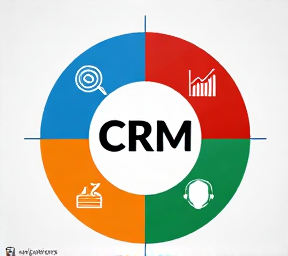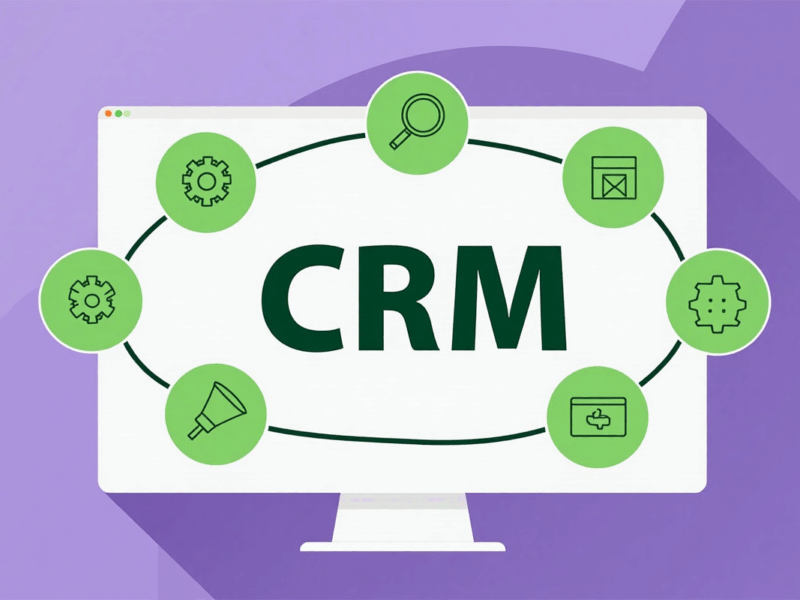How Chatbots and Virtual Assistants Will Enhance CRM in 2025
In the rapidly evolving landscape of customer relationship management (CRM), the integration of chatbots and virtual assistants is set to revolutionize how businesses interact with their customers. As we approach 2025, these technologies will play a crucial role in enhancing customer experiences, streamlining operations, and driving business growth. This article will explore how chatbots and virtual assistants can improve CRM systems, the benefits they offer, and best practices for implementation.
Understanding Chatbots and Virtual Assistants
What Are Chatbots?
Chatbots are automated programs designed to simulate human conversation through text or voice interactions. They can handle a variety of tasks, from answering frequently asked questions to assisting with complex customer inquiries. Chatbots can be integrated into websites, messaging apps, and CRM systems to provide instant support to customers.
What Are Virtual Assistants?
Virtual assistants are more advanced AI-driven tools that can perform a range of tasks beyond simple conversation. They can manage schedules, send reminders, gather data, and even execute transactions. Virtual assistants leverage natural language processing (NLP) and machine learning to understand user intent and provide personalized responses.
The Role of Chatbots and Virtual Assistants in CRM
1. Enhancing Customer Engagement
One of the primary benefits of integrating chatbots and virtual assistants with CRM systems is the enhancement of customer engagement. These tools provide real-time support, allowing businesses to respond to customer inquiries instantly.
Benefits of Real-Time Support
- 24/7 Availability: Chatbots can operate around the clock, ensuring customers receive assistance whenever they need it.
- Immediate Response: Customers no longer have to wait for human agents to become available; they can get answers instantly.
- Increased Satisfaction: Quick responses lead to higher customer satisfaction rates, fostering loyalty and trust.
2. Streamlining Customer Interactions
Integrating chatbots and virtual assistants into CRM systems streamlines customer interactions by automating routine tasks. This automation allows human agents to focus on more complex issues that require personal attention.
Automation of Routine Tasks
- Appointment Scheduling: Chatbots can handle scheduling appointments without human intervention.
- Data Entry: Virtual assistants can automatically input customer information into the CRM system, reducing manual entry errors.
- Follow-Up Reminders: Automated reminders for follow-ups ensure that no lead or customer inquiry falls through the cracks.
3. Personalizing Customer Experiences
Chatbots and virtual assistants can analyze customer data stored in CRM systems to provide personalized interactions. By understanding customer preferences and behaviors, these tools can tailor responses accordingly.
Personalization Strategies
- Customized Recommendations: Based on previous purchases or inquiries, chatbots can suggest products or services that align with customer interests.
- Targeted Promotions: Virtual assistants can inform customers about relevant promotions or discounts based on their purchase history.
- Behavior Tracking: By monitoring user interactions, businesses can adjust their marketing strategies to better meet customer needs.
Benefits of Integrating Chatbots and Virtual Assistants with CRM
1. Cost Efficiency
Integrating chatbots and virtual assistants into CRM systems can lead to significant cost savings for businesses. By automating routine tasks, companies can reduce the need for extensive customer support teams while maintaining high service levels.
Cost Reduction Strategies
- Lower Labor Costs: Fewer human agents are needed to handle basic inquiries.
- Increased Productivity: Human agents can focus on high-value tasks rather than repetitive queries.
2. Improved Data Collection
Chatbots and virtual assistants can gather valuable data during customer interactions. This data can be fed back into the CRM system for analysis, helping businesses make informed decisions.
Data Collection Opportunities
- Customer Feedback: Automated surveys can be conducted at the end of interactions to gather feedback on service quality.
- Behavioral Insights: Monitoring chatbot interactions provides insights into common customer pain points and preferences.
3. Enhanced Lead Generation
Chatbots can play a vital role in lead generation by engaging website visitors and capturing their information for follow-up.
Lead Generation Techniques
- Qualifying Leads: Chatbots can ask qualifying questions to determine if a visitor is a potential lead before passing them on to sales teams.
- Instant Engagement: Engaging visitors immediately increases the likelihood of conversion compared to traditional methods.
Best Practices for Implementing Chatbots and Virtual Assistants in CRM
1. Define Clear Objectives
Before implementing chatbots or virtual assistants, it’s essential to define clear objectives for what you want to achieve with these tools. Whether it’s improving response times or enhancing lead generation, having specific goals will guide your implementation process.
Key Questions to Consider
- What specific outcomes do you want from integrating chatbots?
- How will you measure success?
- What resources do you need to achieve these goals?
2. Choose the Right Technology
Selecting the right chatbot or virtual assistant technology is crucial for successful integration with your CRM system. Look for solutions that offer compatibility with your existing software.
Popular Technologies
- AI-Powered Platforms: Consider platforms like Dialogflow or Microsoft Bot Framework that leverage AI capabilities.
- CRM Integration Options: Ensure that your chosen technology integrates seamlessly with your existing CRM system.
3. Train Your Chatbot Effectively
Training your chatbot is essential for ensuring it provides accurate responses. Use historical data from your CRM system to train the chatbot on common queries and appropriate responses.
Training Techniques
- Use Real Interactions: Analyze past customer interactions to identify frequently asked questions.
- Continuous Learning: Implement machine learning capabilities so your chatbot improves over time based on new data.
4. Monitor Performance Metrics
After implementing chatbots and virtual assistants, regularly monitor performance metrics related to their effectiveness in enhancing customer interactions.
Key Metrics to Track
- Response Time: Measure how quickly the chatbot responds to inquiries.
- Customer Satisfaction Scores: Use post-interaction surveys to gauge customer satisfaction levels.
- Lead Conversion Rates: Track how many leads generated through chatbots convert into customers.
5. Gather Feedback for Improvement
Encourage customers to provide feedback on their experiences with chatbots and virtual assistants. Use this feedback to make necessary adjustments and improvements.
Feedback Collection Methods
- Surveys Post Interaction: Send short surveys after chatbot interactions asking about user experience.
- Monitor Social Media Mentions: Keep an eye on social media platforms for comments about your chatbot’s performance.
The Future of Chatbots and Virtual Assistants in CRM
As technology continues to evolve, so too will the capabilities of chatbots and virtual assistants within CRM systems. Businesses should stay informed about emerging trends that could impact their usage:
1. Advanced Natural Language Processing (NLP)
The future of chatbots lies in advanced NLP capabilities that allow them to understand context better and engage in more meaningful conversations with customers.
Benefits of Advanced NLP
- Improved Understanding: Enhanced NLP will enable chatbots to comprehend complex queries more accurately.
- Human-Like Conversations: Customers will experience more natural interactions that mimic human conversation patterns.
2. Integration with IoT Devices
As Internet of Things (IoT) devices become more prevalent, integrating chatbots with these devices will provide new opportunities for interaction.
IoT Integration Opportunities
- Smart Home Devices: Customers could use chatbots through smart speakers or other devices for instant support.
- Real-Time Data Access: Chatbots could access real-time data from connected devices, providing personalized recommendations based on current usage patterns.
3. Enhanced Personalization through AI
The integration of AI technologies will enable chatbots and virtual assistants to deliver even more personalized experiences by analyzing vast amounts of customer data stored in CRM systems.
Personalized Interaction Features
- Tailored Recommendations: AI algorithms will suggest products or services based on individual preferences.
- Proactive Engagements: Chatbots may initiate conversations based on user behavior patterns identified through analytics.
Conclusion
The integration of chatbots and virtual assistants into CRM systems is set to transform how businesses interact with their customers by 2025. By enhancing engagement, streamlining communication, personalizing experiences, improving efficiency, and providing valuable insights into customer behavior, these technologies are becoming indispensable tools in modern business strategies.To successfully implement these solutions, companies must define clear objectives, choose compatible technologies, train their bots effectively, monitor performance metrics regularly, and gather feedback for continuous improvement. As we look toward the future, staying informed about emerging trends will ensure businesses leverage these tools effectively for long-term success in a competitive market landscape.By embracing these innovations today, organizations can position themselves at the forefront of customer relationship management tomorrow—creating lasting connections with their clients while driving growth and profitability.


